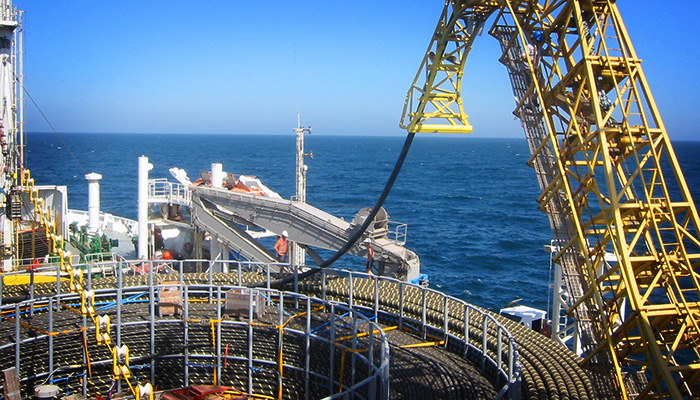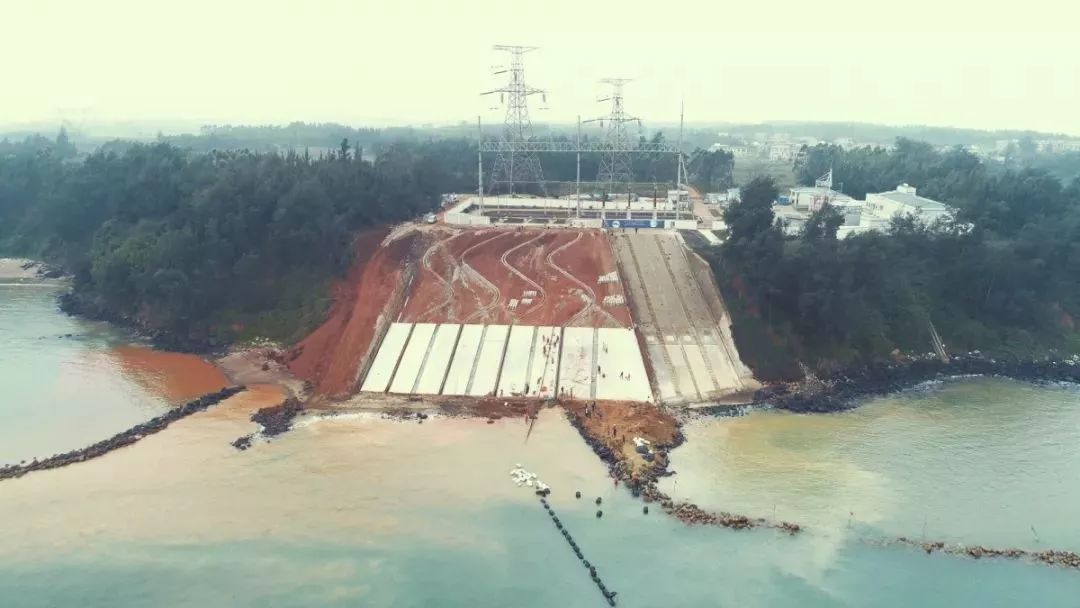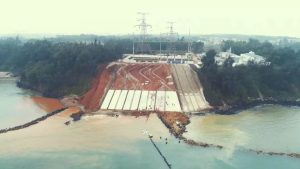Submarine cables are the backbone of global communication, enabling the transmission of vast amounts of data across continents and oceans.
These cables are fiber optic cables that are laid on the ocean floor and connect different parts of the world, facilitating international telecommunication and internet connectivity. Without submarine fiber cable, it would be impossible to have a truly global network of communication.
The importance of submarine fiber cables in today’s world cannot be overstated, as they enable businesses, governments, and individuals to communicate with each other instantaneously across vast distances.
About Submarine Cables
In this blog post, we will explore the history, technical aspects, economic and social impact, challenges, and risks involved in laying and maintaining submarine communications cables, as well as their future potential for further advancements.
By understanding these aspects of subsea cables, we can appreciate their role in shaping our interconnected world.
History of Submarine Power Cables
The history of submarine cables can be traced back to the mid-19th century, when the first transatlantic cable was laid across the ocean floor. This marked a significant milestone in global communication, as it enabled messages to be sent between Europe and North America in a matter of minutes, rather than weeks or months. The first deep sea cable was made of copper and insulated with gutta-percha, a natural rubber derived from trees found in Southeast Asia.
The First Submarine Cable
The transatlantic cable was laid between Valentia Island, Ireland, and Heart’s Content, Newfoundland, over several years starting in 1857. The project was led by British entrepreneur Cyrus West Field, who formed the Atlantic Telegraph Company for this purpose. The laying of the cable proved to be a monumental engineering feat that required overcoming numerous challenges such as rough seas, faulty equipment, and breaks in the cable.
After several unsuccessful attempts, the first transatlantic message was successfully transmitted on August 16, 1858. However, due to technical difficulties and poor signal quality, the cable failed after only a few weeks of operation. It wasn’t until 1866 that a reliable transatlantic telegraph service was established using an improved version of the cable.
The impact of the transatlantic cable on global communication cannot be overstated. Before its installation, communication between Europe and North America relied on ships carrying mail and telegrams across the ocean. With the advent of submarine cables, messages could be sent instantly across vast distances at greatly reduced costs.
Development of Submarine Cables Over Time
Over time, submarine power cables have become increasingly sophisticated and capable of transmitting larger amounts of data at faster speeds. In the early days of undersea data cables, signals were transmitted using Morse code at speeds of only a few words per minute. Today’s fiber optic cables can transmit data at speeds up to several terabits per second.
Advancements in technology have also made it possible to lay longer and more complex networks of submarine cables around the world. These networks connect continents and enable global communication on an unprecedented scale. For example, there are currently over 400 active submarine fiber optic cables spanning more than 1 million kilometers undersea.
Benefits of the development of submarine wires
The development of submarine cables has had a profound economic impact as well. They have facilitated international trade by enabling faster communication between businesses located in different parts of the world. They have also created new opportunities for industries such as finance and e-commerce by making it easier to transfer large amounts of data quickly and securely.
In addition to their economic impact, submarine cables have had social implications as well. They have connected people from different cultures and backgrounds by enabling them to communicate with each other regardless of geographic location. This has helped foster greater understanding between nations and has contributed to cultural exchange on a global scale.
Economic and Social Impact of Submarine Cables
Submarine cable wires have played a significant role in shaping the global economy and social landscape. These cables enable high-speed data transmission between continents, making it possible for businesses to communicate with their partners and customers worldwide. In this section, we will explore the impact of submarine cables on the global economy and international trade.
Role of Submarine Cords in the Global Economy
The importance of reliable communication for businesses cannot be overstated. Submarine cables provide a high-speed, low-latency connection that is crucial for businesses operating globally. This connectivity enables companies to communicate with their partners, customers, and suppliers quickly and efficiently, reducing response times and improving productivity.
Submarine cables also play a critical role in financial markets. High-frequency trading (HFT) relies heavily on low-latency connections to execute trades faster than competitors. The speed advantage provided by submarine cables can mean the difference between profit and loss in HFT.
In addition to facilitating business communications, underground sea cables are also essential for global supply chains. Companies rely on these connections to transport goods across continents quickly and efficiently. Without submarine cables, it would be difficult for companies to manage complex supply chains that span multiple countries.
Impact on International Trade
Submarine cables have had a significant impact on international trade by facilitating cross-border communication. Businesses can now communicate with their partners overseas as easily as they can with those in their own country. This ease of communication has reduced trade barriers and made it easier for companies to expand into new markets.
The impact of submarine cables on global trade patterns cannot be overstated. These connections have enabled emerging economies to participate more fully in international trade by providing access to global markets that were previously out of reach. As a result, countries like China, India, and Brazil have been able to develop thriving export industries that contribute significantly to their economies.

Furthermore, subsea fiber cables have enabled e-commerce to flourish by providing fast and reliable internet connectivity worldwide. Online marketplaces like Amazon, Alibaba, and eBay would not exist without high-speed data connections provided by submarine cables.
Future Potential of Submarine Cables
The future of submarine cables is bright, with the potential for significant advancements in both cable technology and connectivity. Advancements in cable technology are already underway, with engineers working to increase data transfer speeds and improve cable durability. These improvements will not only make current networks more efficient, but also enable the creation of new networks that can handle even more bandwidth.
In addition to technological advancements, there is also the potential for increased connectivity as submarine wire networks expand to underserved areas. This expansion could have a significant impact on global communication and development, bringing new opportunities to people who previously lacked access to reliable internet connections.
The economic and social benefits of increased connectivity are numerous. Improved internet access can lead to greater economic growth, as businesses gain access to new markets and consumers gain access to new products and services. It can also lead to improved education outcomes, as students gain access to online resources and remote learning opportunities.
Overall, the future of submarine cables looks promising. As technology continues to advance and networks expand, we can expect even greater connectivity and all the benefits that come with it. From powering global communication to enabling economic growth and development, submarine cables are truly the backbone of our connected world.
For more information, please consult vericable website.

